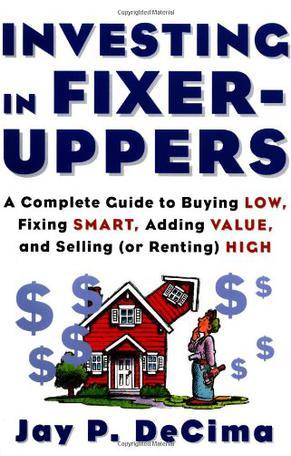Refinancing Your VA Loan: Transform Your Home Financing with Expert Tips and Strategies
Guide or Summary:Understanding VA Loan RefinancingWhy Refinance Your VA Loan?How to Refinance Your VA LoanExpert Strategies for Successful VA Loan Refinanci……
Guide or Summary:
- Understanding VA Loan Refinancing
- Why Refinance Your VA Loan?
- How to Refinance Your VA Loan
- Expert Strategies for Successful VA Loan Refinancing
Homeowners across the United States are constantly seeking ways to optimize their finances, especially when it comes to their mortgage. For veterans and active-duty military personnel, the Veteran Affairs (VA) loan program offers an invaluable resource for homebuying and refinancing. However, as the housing market evolves and interest rates fluctuate, it's essential for VA loan holders to explore the benefits of refinancing. This comprehensive guide delves into the intricacies of VA loan refinancing, providing actionable insights and expert strategies to help you make the most of your home financing.
Understanding VA Loan Refinancing
Before diving into the specifics of refinancing your VA loan, it's crucial to grasp the fundamentals. A VA loan is a mortgage option available to eligible veterans, active-duty military members, and their families. These loans offer competitive interest rates, flexible repayment terms, and no down payment requirement, making them an attractive choice for homeowners. Refinancing, on the other hand, involves replacing your existing mortgage with a new one, often at a lower interest rate or with different terms. This process can significantly reduce your monthly payments, free up cash flow, and even shorten the overall loan term.
Why Refinance Your VA Loan?
The decision to refinance your VA loan should be carefully considered. However, there are several compelling reasons why this strategy may be beneficial:
1. **Lower Interest Rates**: Securing a lower interest rate through refinancing can save you thousands of dollars over the life of your loan, making it a smart financial move.
2. **Reduced Monthly Payments**: By refinancing to a lower interest rate or a longer loan term, you can significantly decrease your monthly mortgage payments, providing financial relief and flexibility.
3. **Cash Out for Home Improvements**: If you have equity in your home, you may choose to refinance for a cash-out option. This can provide you with the funds needed for home improvements, reducing your living expenses and increasing your home's value.
4. **Shorter Loan Terms**: Refinancing to a shorter loan term can help you pay off your mortgage faster, reducing the total amount of interest you pay over time.

5. **Fixed-Rate Mortgages**: Switching to a fixed-rate mortgage can provide you with the security of a stable payment amount, regardless of market fluctuations.
How to Refinance Your VA Loan
Refinancing your VA loan involves several steps. Here's a detailed breakdown of the process:
1. **Evaluate Your Financial Situation**: Before initiating the refinancing process, it's essential to assess your financial health. Consider your income, debt-to-income ratio, and overall financial goals.
2. **Gather Documentation**: Collect all necessary documents, including tax returns, pay stubs, bank statements, and your current mortgage details. These documents will be required to apply for refinancing.
3. **Shop for Lenders**: Research and compare different lenders to find the best refinancing options. Look for lenders that specialize in VA loans and offer competitive rates and terms.
4. **Apply for Refinancing**: Once you've found a suitable lender, apply for refinancing. Be prepared to provide detailed financial information and answer questions about your current mortgage and financial goals.

5. **Review Loan Offers**: After submitting your application, you'll receive loan offers from multiple lenders. Carefully review each offer, considering factors such as interest rates, fees, and repayment terms.
6. **Close the Deal**: Once you've chosen the best loan offer, you'll need to close the deal. This involves signing loan documents, paying any required fees, and finalizing the refinancing process.
Expert Strategies for Successful VA Loan Refinancing
To ensure a smooth and successful refinancing experience, consider the following expert strategies:
1. **Pre-Approval**: Before refinancing, get pre-approved for a new loan. This demonstrates your financial stability to lenders and can help you negotiate better terms.
2. **Consider Your Loan-to-Value Ratio**: Your loan-to-value ratio (LTV) is the ratio of your loan amount to your home's appraised value. A higher LTV may affect your interest rate and down payment requirements.
3. **Understand Your Loan Terms**: Be aware of the different loan terms available, such as fixed-rate or adjustable-rate mortgages, and choose the one that best aligns with your financial goals.

4. **Plan for Closing Costs**: Refinancing typically involves closing costs, which can include fees for appraisals, title searches, and loan processing. Factor these costs into your budget to avoid any surprises.
5. **Seek Professional Advice**: Consult with a financial advisor or mortgage professional to help guide you through the refinancing process and ensure you're making the best financial decisions.
In conclusion, refinancing your VA loan can offer numerous benefits, including lower interest rates, reduced monthly payments, and the opportunity to access cash for home improvements. By understanding the process and following expert strategies, you can successfully navigate the refinancing landscape and make the most of your home financing. Whether you're a veteran, active-duty military member, or eligible family member, refinancing your VA loan is a strategic move that can enhance your financial well-being and achieve your homeownership goals.